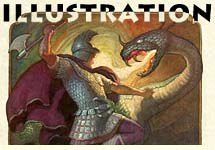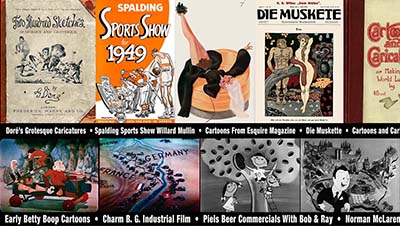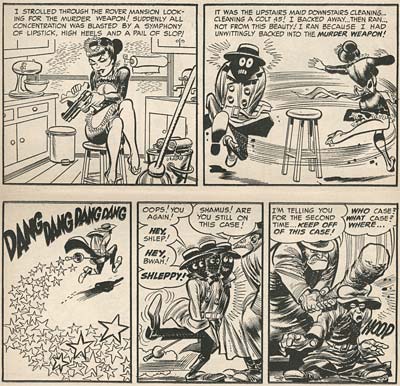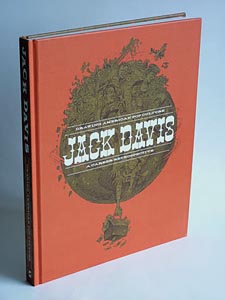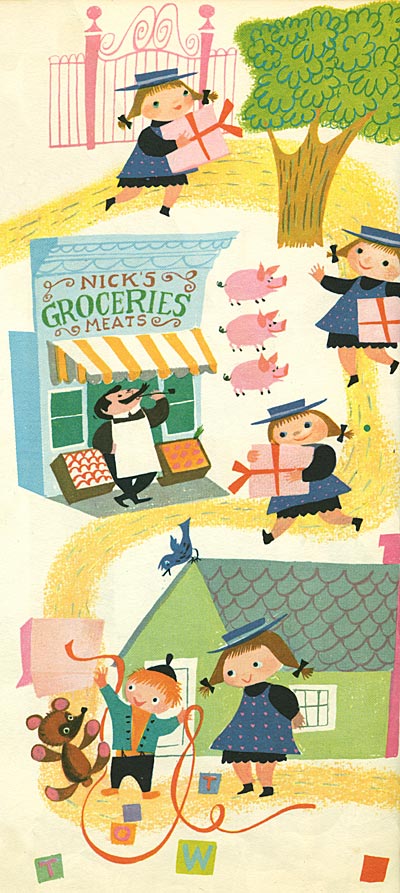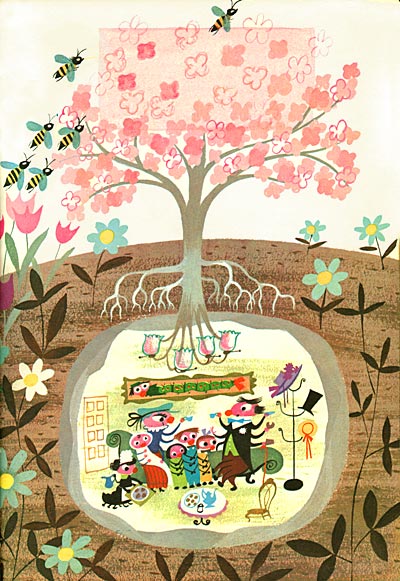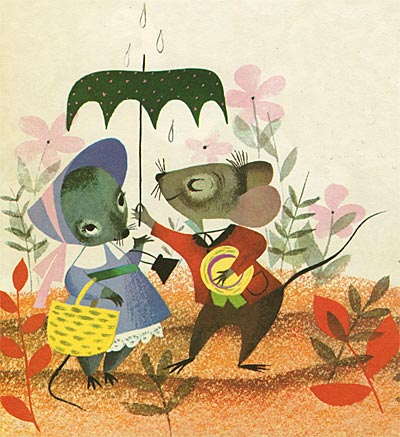
Here’s another post about an artist you’ve never heard of before, but you’ll never forget once you look at his work! My pal Tony "Superslice" Mora gave me this book as a birthday gift. It’s a real treasure.

![]() Felix Lorioux was one of France’s best loved artists, but he was a humble, quiet man who did little to promote himself beyond his home country. He was born in 1872 and began as a advertising designer. But his childlike sense of wonder led him to a career as a children’s book illustrator. Walt Disney met him in 1919 when Disney was an Red Cross ambulance driver and Lorioux’s wife ws a Red Cross nurse. Disney was impressed with his abilities and hired him to illustrate books for the French market based on Mickey Mouse and the Silly Symphonies. A Lorioux illustration of a duck in a sailor suit may have even been the inspiration for Donald Duck! Around 1934, Lorioux resigned from illustrating for Disney, citing the language barrier and also because he didn’t want to relocate to California to join the studio.
Felix Lorioux was one of France’s best loved artists, but he was a humble, quiet man who did little to promote himself beyond his home country. He was born in 1872 and began as a advertising designer. But his childlike sense of wonder led him to a career as a children’s book illustrator. Walt Disney met him in 1919 when Disney was an Red Cross ambulance driver and Lorioux’s wife ws a Red Cross nurse. Disney was impressed with his abilities and hired him to illustrate books for the French market based on Mickey Mouse and the Silly Symphonies. A Lorioux illustration of a duck in a sailor suit may have even been the inspiration for Donald Duck! Around 1934, Lorioux resigned from illustrating for Disney, citing the language barrier and also because he didn’t want to relocate to California to join the studio.

![]() Lorioux went on to illustrate definitive editions of Perrault’s Fairy Tales, Don Quixote, the Fables of La Fontaine and Robinson Crusoe. However, he was most at home painting delicate watercolors of the birds, flowers and insects in his garden. He imagined fantastic worlds populated by these little creatures. This book, "Le Buffon des Enfants: Les Insectes de Chez Nous" is one of his greatest works. Tony was fortunate enough to stumble across a deluxe edition from 1946 that was limited to only 2000 copies. The print quality is astounding. Lorioux’s books are rarely seen in the United States.
Lorioux went on to illustrate definitive editions of Perrault’s Fairy Tales, Don Quixote, the Fables of La Fontaine and Robinson Crusoe. However, he was most at home painting delicate watercolors of the birds, flowers and insects in his garden. He imagined fantastic worlds populated by these little creatures. This book, "Le Buffon des Enfants: Les Insectes de Chez Nous" is one of his greatest works. Tony was fortunate enough to stumble across a deluxe edition from 1946 that was limited to only 2000 copies. The print quality is astounding. Lorioux’s books are rarely seen in the United States.









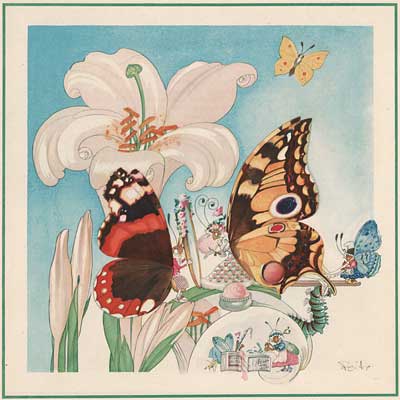


I don’t have room on the blog to reproduce this entire book, but check out the way Lorioux incorporates his watercolors into the text of the book…

Here’s another jaw-droppingly beautiful book by Lorioux, Fables De La Fontaine…


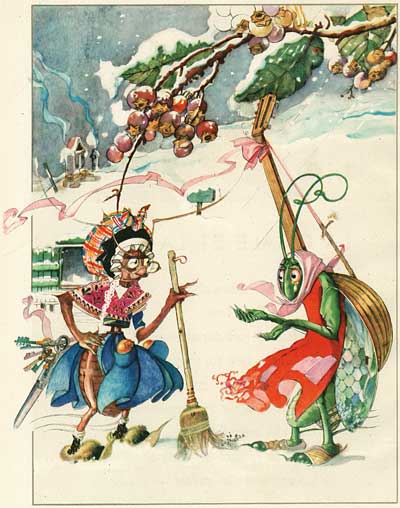



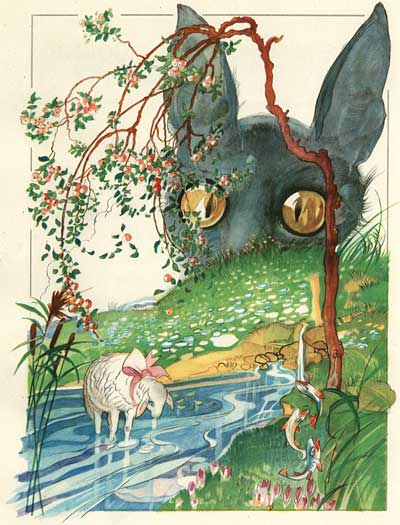
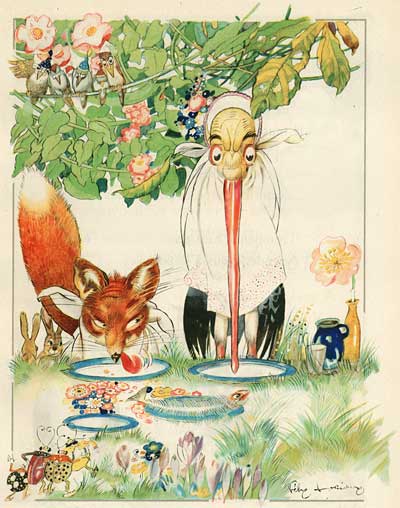

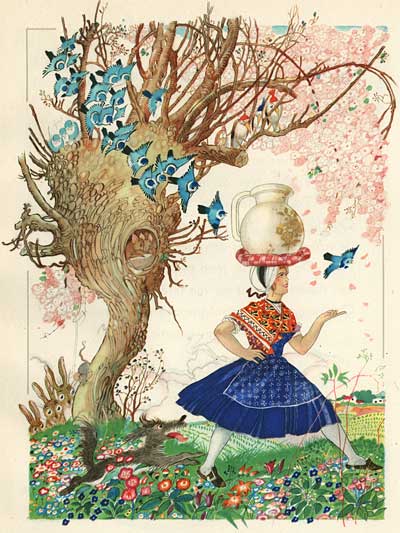















Thanks to Michael Andrew Wilson for sharing some information in this article. If anyone reading this has more information about Lorioux or his work, feel free to post it in the comments.
Stephen Worth
Director
Animation Resources
This posting is part of a series of articles comprising an online exhibit spotlighting Illustration.
THIS IS JUST THE TIP OF THE ICEBERG!
Animation Resources has been sharing treasures from the Animation Archive with its members for over a decade. Every other month, our members get access to a downloadable Reference Pack, full of information, inspiration and animation. The RefPacks consist of e-books jam packed with high resolution scans of great art, still framable animated films from around the world, documentaries, podcasts, seminars and MORE! The best part is that all of this material has been selected and curated by our Board of professionals to aid you in your self study. Our goal is to help you be a greater artist. Why wouldn’t you want to be a member of a group like that?
Membership comes in three levels. General Members get access to a bi-monthly Reference Pack as well as a Bonus RefPack from past offerings in the in-between months. We offer a discounted Student Membership for full time students and educators. And if you want to try out being a member, there is a Quarterly Membership that runs for three months.
JOIN TODAY!
https://animationresources.org/membership/levels/
FREE SAMPLES!
Not Convinced Yet? Check out this SAMPLE REFERENCE PACK! It will give you a taste of what Animation Resources members get to download every other month! That’s 560 pages of great high resolution images and nearly an hour of rare animation available to everyone to download for FREE! https://animationresources.org/join-us-sample-reference-pack/
![]()
![]() Animation Resources depends on your contributions to support its projects. Even if you can’t afford to join our group right now, please click the button below to donate whatever you can afford using PayPal.
Animation Resources depends on your contributions to support its projects. Even if you can’t afford to join our group right now, please click the button below to donate whatever you can afford using PayPal.















